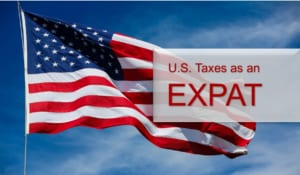 The investment capital that an EB-5 Investor may use for his or her investment, called the “lawful source of funds” (“SOF”), can come from any source as long as the investor can prove that the capital or funds were obtained lawfully. Some common SOF are salary and bonus income, dividends from a company, stock options earned, or investment income. Easily the most common SOF, in about 80% of cases, is an investor using a property owned by him or her or a family member such as a home or an apartment.
The investment capital that an EB-5 Investor may use for his or her investment, called the “lawful source of funds” (“SOF”), can come from any source as long as the investor can prove that the capital or funds were obtained lawfully. Some common SOF are salary and bonus income, dividends from a company, stock options earned, or investment income. Easily the most common SOF, in about 80% of cases, is an investor using a property owned by him or her or a family member such as a home or an apartment.
In this instance, the investor liquidates the funds for the investment by selling the home or obtaining a mortgage loan against the property. There is still a need to source what we call the “seed money” which is to identify how the investor lawfully obtained the property, although the further back in time the acquisition occurred, the less documentation is usually required because it is understandable that records may not exist going back many years.
The funds must be personally invested into a qualifying business, called the New Commercial Enterprise (“NCE”) by the investor. For example, the funds cannot originate from an investor’s business which he or she would remit straight into the NCE. The investor must first own and control the funds at some point before investing. Thus, if an investor wants to use accumulated capital from an existing business, he or she must take a distribution, pay whatever tax liability might be applicable, and then personally invest the capital into the NCE under his or her name, although in some situations a transfer agent can act to remit the funds on behalf of the investor.
There are some ways that an investor might “borrow” capital from a company but these can be complex and generally we prefer to avoid them.
If an investor has earned salary and distributions over many years, we would need to show receipt of such funds and then a link to where the funds are before the transfer begins. Few investors leave sizable sums of salary or bonus income sitting in a savings account. Most investors will deploy funds it into various income earning products so it will be necessary to trace those funds which are being liquidated to be used for the investment.
The second critical factor is the path of funds. The investor must be able to trace the path of the funds from the source all the way to the remittance into the NCE account.
In transferring the funds to the NCE, accumulating the funds into the investor’s account and then remitting to the NCE account should be clearly documented. In countries with currency exchange and remittance restrictions, this can be a significant obstacle. Failure in the transfer of funds is one of the most common reasons for a denied I-526 petition.
Contact Enterline and Partners for more information on the EB-5 immigrant investor visa.
ENTERLINE & PARTNERS CONSULTING
Ho Chi Minh City, Vietnam Office
Ad: 3F, IBC building, 1A Cong Truong Me Linh Str., District 1, HCMC, Vietnam
Tel: +84 933 301 488
Email: info@enterlinepartners.com
Facebook: Enterline and Partners-Đầu Tư Định Cư tại Mỹ
Website: http://enterlinepartners.com
Manila, Philippines Office
Ad: Unit 2507 Cityland 10 Tower 1, 156 H.V. Dela Costa Street, Makati City, Philippines 1209
Tel: +632 5310 1491
Email: info@enterlinepartners.com
Facebook: Enterline and Partners Philippines
Website: https://enterlinepartners.com/language/en/welcome/








